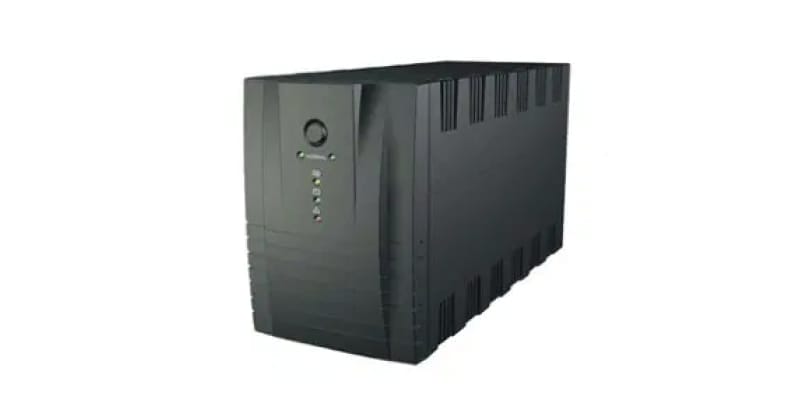- Home
- About us
- Products
- Dealer Enquiry
- Contact Us
- 044 -2486 1994
- +91 99623 98222
- sales@nantech.in
- REQUEST A QUOTE

Imagine you are at the helm of a bustling business, and a reliable power source is your lifeline. A hiccup in your Uninterruptible Power Supply (UPS) makes you wonder whether you should replace your UPS battery or buy a new UPS. Let us embark on a cost-effectiveness journey to make a smart choice that keeps your wheels turning smoothly and aligns with your fiscal plans.
Your UPS is the lifeblood of your enterprise, safeguarding crucial systems during power cuts. Yet, no tech lasts forever, and signs of wear might threaten your venture. As your UPS battery ages, its backup time shrinks, exposing your vital gear to power loss risks. Heat and poor storage can minimise your UPS life. A battery in temps above 20°C may degrade faster, impacting your UPS’s output. Catching these signs early is key to uninterrupted power protection.
UPS batteries have a 3-5 year shelf life. Beyond this, it is smart to replace them to avoid surprises. When your UPS starts faltering, pinpointing the problem is essential. Is the battery to blame? Here is a quick rundown of signs that It is time for a UPS battery change
It's also possible that if your UPS voltage is high, your battery may be the culprit. If the battery is unstable or its shape changes, it may act up. Swollen or leaking units are dire warnings. Your battery could degrade quicker in places with frequent power cuts, so timely checks and swaps are crucial.
Regular checks can catch issues before they grow. Remember, preventive UPS care is key.
By responding to these signs, you can balance the upsides of a battery replacement with the downsides of battery failure.
Replacing an old UPS battery not only restores lost performance but also extends the lifespan of your system. This can secure your operations from power outages. If your UPS system is otherwise functioning well, swapping batteries may be more cost-effective than replacing the entire system.
Opting for a battery change also steps towards a cleaner Earth. Picking the correct UPS battery is vital. A smart choice ensures your UPS runs optimally. Exploring informed battery selection could benefit you further.
Choosing between a new UPS battery and a system upgrade requires a thorough cost-benefit analysis. Stack up the repair bills of an old UPS against a new system's upfront cost. Newer UPS models can save on power bills over time. Plus, the potential losses from UPS failure. in cash, customer trust, and data. are steep. A new system might bring better uptime and less risk.
Market reports show a surge in the need for steadfast power aids. A Technavio study forecasts a USD 439.47 million growth in the global UPS battery market by 2027. This highlights the wisdom in considering a system upgrade to stay competitive.
If lower upkeep costs, better energy use, and less downtime outweigh the costs, it could be time to consider a full upgrade. This move could keep your business powered and ready for what lies ahead.
When your UPS nears its twilight years, you might wonder about battery change or full upgrade. Knowing when to upgrade is key. Newer UPS models come with perks like better energy efficiency, which means lower power costs and a smaller eco-footprint.
Adding modern isolation tech could be smart in a system upgrade. These transformers heighten safety and efficiency, keeping your power setup current.
Watch for signs of an outdated UPS. A battery switch might be insufficient if it is often down or can't keep the power on. Eyeing energy and cost savings with fresh UPS models can help you make an informed, tailored decision.
Faced with the UPS battery or system upgrade choice, tapping into UPS expert’s know-how is vital. They have the savvy to steer you through UPS upkeep and upgrades, matching your business’s specific needs. They can check your battery and system, considering factors like age and new tech. They will tell you if a battery change is enough or if you are better off with a full upgrade.
In short, UPS expert advice is priceless. Their insights can lead to a confident, informed decision, ensuring your business stays powered and protected. When thinking about your UPS options, remember that expert advice is a solid investment in your power solutions future.
Choosing wisely between a UPS battery swap and a system upgrade can define your business’s power outage resilience. Your UPS is crucial, so weigh your system's current form, future needs, and the financial effects of both paths.
Nantech Technologies stands ready with bespoke power solutions backed by over 20 years of knowledge, experience, and customer service. As one of the top UPS battery dealers in Chennai, we are geared to meet your unique demands. Lock in your power supply with Nantech’s insight and snag a free power solution consult today, making sure your business keeps ticking without interruption.
If you do not replace your UPS battery, the following consequences can occur:
Regular preventive maintenance and timely battery replacement are crucial to ensure UPS reliability and protect against unexpected downtimes.
No. Simply replacing a UPS battery may not match the reliability of a new UPS, especially if the unit is old, has inadequate capacity, or if newer models offer better technology and features.
To safely dispose of old UPS or UPS batteries, you can take the following steps:
POWER QUALITY AUDIT OF NANTECH PRODUCTS
Why the UPS is the Heart of a Data Centre Power System!
Are We An Electricity-Surplus Nation?
Safety First
The UPS Rental Checklist
Replace a UPS Battery or Buy a New UPS System?
A Closer Look at Solar Inverter vs Normal Inverter